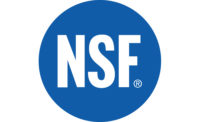
The 2012 International Green Construction Code (IgCC), released yesterday, aims to increase the energy-efficiency of structures, while providing governments direction and oversight of green design and construction, according to the International Code Council (ICC) the code's author and one of several U.S. Green Building Council (USGBC) partners in the effort.
USGBC, creators of the LEED green building certification system and co-authors of ANSI/ASHRAE/IES/USGBC Standard 189.1, applauds this new model code that serves as an important new policy option for state and local governments looking to codify green building practice.
"The IgCC and Standard 189.1 draw from more than a decade of national and regional leadership programs that road-tested green building practices, methods and materials," said Brendan Owens, vice president of LEED Technical Development, USGBC. "These pioneering efforts broke important new ground that has enabled the IgCC to mainstream green building practices that were previously considered innovative in a foundation intended for minimum code language."
The 2012 IgCC, which incorporates the 2011 version of Standard 189.1 as an optional path to compliance, offers a new code baseline that can be tailored by state and local governments to share many of the benefits of green buildings with the millions of buildings that are designed, constructed and renovated to meet minimum code, whether or not they are engaged in the LEED program.
"As the IgCC begins to inform building codes and building practice across the country, LEED is evolving to reward greater thresholds of green building leadership," said Roger Platt, svp Global Policy & Law, USGBC. "We need public policy that rewards this beyond-code leadership alongside codes that redefine what we should expect of our buildings. The IgCC and Standard 189.1 are an important and intentional complement to LEED."
The 2012 version of the IgCC - authored by ICC in partnership with the American Institute of Architects (AIA), ASTM international (ASTM), ASHRAE, the Illuminating Engineering Society (IES), and USGBC - is an important first step for the partner organizations and the building community in a long, but important journey to mainstream healthier, lower impact, more efficient and responsible building practice, according to USGBC.
"The IgCC published today was developed during the last three years with input from code and construction industry professionals, environmental organizations, policy makers and the public," said Richard P. Weiland, CEO of the ICC that developed the new code. "Our community was diligent in developing a code that is not only adoptable, usable and enforceable, but also flexible and adaptable. We expect this new model code, like the family of other ICC Codes, to be adopted across the country and used globally."
For more than 100 years, building codes in the United States have evolved to incorporate critical safeguards for building occupants based on the most current building science. More recently, communities have been calling for a regulatory tool that complements voluntary rating systems by offering jurisdictions minimum safeguards to protect against building-related risks to human and environmental health. Several state and local jurisdictions are already moving in this direction by putting into place early versions of the IgCC that were released during the development of the code.





